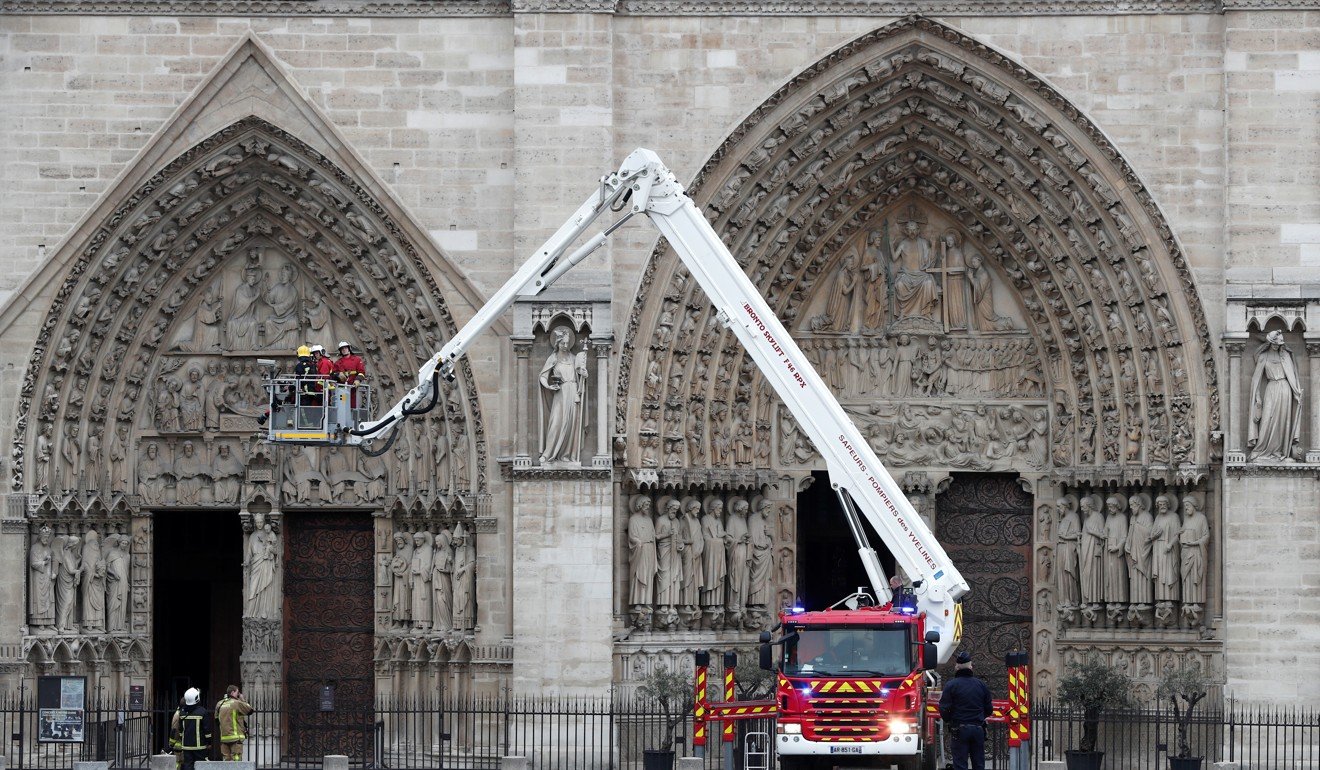
Notre Dame blaze fully extinguished, experts say landmark’s age and design fuelled fire and narrow streets nearby foiled firefighters
- Authorities are analysing their response to the fire that tore through the more than 850-year-old cathedral
Now, experts are consider if there was anything firefighters could have done to control the blaze that tore through the historic landmark sooner.
Experts say the combination of a structure that is more than 850 years old, built with heavy timber and full of soaring open spaces, and lacking sophisticated fire-protection systems led to the quick rise of flames on Monday, which jeopardised the entire cathedral before firefighters brought the blaze under control.
“Very often when you’re confronted with something like this, there’s not much you can do,” said Glenn Corbett, a professor of fire science at John Jay College.

Hosepipes looked overmatched as flames raged across the cathedral’s wooden roof and burned bright orange for hours. The fire toppled a 91-metre (300-foot) spire and launched tennis ball-sized embers into the air.
While the cause is under investigation, authorities said the cathedral’s structure – including its landmark rectangular towers – has been saved.
Some of the factors that made Notre Dame a must-see for visitors to Paris – its age, sweeping size and French Gothic design featuring masonry walls and tree trunk-sized wooden beams – also made it a tinderbox and a difficult place to fight a fire, said US Fire Administrator G. Keith Bryant.
With a building like that, it’s nearly impossible for firefighters to attack a fire from within. Instead, they have to be more defensive “and try to control the fire from the exterior”, said Bryant, a former fire chief in Oklahoma and past president of the International Association of Fire Chiefs.

“When a fire gets that well-involved it’s very difficult to put enough water on it to cool it to bring it under control,” Bryant said.
And while there’s a lot of water right next door in the Seine River, getting it to the right place is a problem, he said: “There are just not enough resources in terms of fire apparatus, hoses to get that much water on a fire that’s that large.”
Because of narrower streets, which make it difficult to manoeuvre large ladder fire trucks, European fire services do not tend to have large ladders like they do in the US, Bryant said.
And what about President Donald Trump’s armchair-firefighter suggestion that tanker jets be used to dump water from above on Notre Dame?
French authorities tweeted that doing so would’ve done more harm than good. The crush of water on the fire-ravaged landmark could’ve caused the entire structure to collapse, they wrote.
Other landmark houses of worship have taken steps in recent years to reduce the risk of a fire.
St Patrick’s Cathedral in New York, built in 1878, installed a sprinkler system during recent renovations and covered its wooden roof with a fire-retardant coating. The cathedral also goes through at least four fire inspections a year.
Washington National Cathedral, built in 1912 from steel, bricks and limestone, is at a lower risk of a fast-moving fire, but is installing sprinklers as part of renovations after damage from a 2011 earthquake.
That cathedral faces fire inspections every two years, but local firefighters stop by more often to learn about the church’s architecture and lingo – so they’ll know where to go if there’s a fire in the nave.

“It’s really important for us to make sure that those local firefighters are aware of our building and our kooky medieval names,” said Jim Shepherd, the cathedral’s director of preservation and facilities.
Cardinal Timothy Dolan, the New York Archbishop who often visited the Notre Dame Cathedral while studying in Europe, saw significance in the fact the fire broke out at the beginning of Holy Week, when Christians there and around the world prepare to celebrate Easter and the resurrection of Jesus Christ.
“Just as the cross didn’t have the last word, neither – for people of faith in France – will this fire have the last word,” Dolan said.

